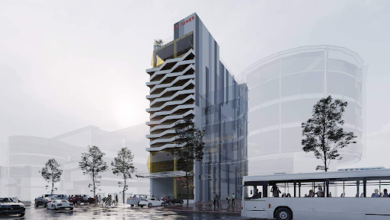Adaptive Reuse in Real Estate: Transforming Old Spaces for New Purposes

Adaptive reuse in real estate involves repurposing old or obsolete buildings for new functions. It’s a sustainable and innovative approach that preserves the character of a city while meeting modern demands. The concept is gaining traction as cities worldwide face the challenge of accommodating growth without extensive new construction. This comprehensive guide will delve into the history, benefits, challenges, types of buildings suitable for adaptive reuse, and the future of this transformative practice in real estate.
Introduction to Adaptive Reuse in Real Estate
Adaptive reuse is the process of taking an existing building and repurposing it for a function other than what it was originally intended for. This practice has become a significant trend in real estate, especially in urban areas, where space is limited, and there is a growing emphasis on sustainability. Unlike new construction, adaptive reuse leverages the structure of old buildings, reducing the need for new materials and minimizing waste.
Adaptive reuse has many benefits. It helps in preserving historical and cultural heritage while providing an innovative way to meet modern needs. By maintaining the exterior facade and interior features, it gives a nod to the past while adapting to present-day requirements. It’s an excellent option for cities looking to revitalize old areas, reduce urban sprawl, and make efficient use of existing structures.
History of Adaptive Reuse
Adaptive reuse is not a new concept. Historically, buildings have been repurposed for different uses for centuries. From old castles turned into museums to churches converted into community centers, the practice has evolved alongside architectural styles and urban needs. During the Industrial Revolution, for instance, many industrial buildings were transformed into residential lofts or artist studios. Over the decades, this practice has gained momentum as more cities recognize the value of preserving their architectural heritage while accommodating growth.
In the early 20th century, adaptive reuse became more common as a response to the lack of space in densely populated urban areas. Post World War II, the trend was evident in war-torn cities across Europe that needed to rebuild and repurpose buildings quickly. Today, adaptive reuse is driven by sustainability goals, economic considerations, and a desire to maintain cultural continuity in rapidly changing urban environments.
Read also: Real Estate Data Analytics: Leveraging Big Data for Better Investments
Key Benefits of Adaptive Reuse
Adaptive reuse offers several advantages that make it an attractive option for developers, architects, and urban planners:
- Sustainability and Environmental Impact: One of the most significant benefits of adaptive reuse is its contribution to sustainability. Reusing an existing structure reduces the demand for new building materials, minimizing the environmental footprint of construction. Additionally, it helps in reducing urban sprawl by making efficient use of space within existing urban boundaries.
- Economic Benefits: Adaptive reuse can be more cost-effective than new construction. Since the foundation, structure, and sometimes even the utilities are already in place, developers can save on some of the costs associated with building from scratch. Moreover, these projects often qualify for tax credits, grants, and other financial incentives aimed at preserving historic buildings or promoting sustainable practices.
- Preservation of Cultural Heritage: Adaptive reuse allows cities to retain their historical and cultural identity. By repurposing old buildings instead of demolishing them, communities can preserve the character and aesthetic appeal of neighborhoods, providing a tangible connection to the past. This is particularly important in areas with rich histories or distinctive architectural styles.
Challenges in Adaptive Reuse Projects
While adaptive reuse offers numerous benefits, it also comes with its own set of challenges:
- Financial Challenges: Although adaptive reuse can be cost-effective, the initial investment can be high, especially when dealing with historical buildings that require careful restoration. Unexpected costs can also arise during renovation, such as structural issues or the need for specialized labor.
- Regulatory and Zoning Issues: Navigating the regulatory landscape for adaptive reuse projects can be complicated. Building codes, zoning laws, and historical preservation regulations may impose constraints that add to the project’s complexity and cost.
- Technical and Structural Challenges: Repurposing a building for a new use often requires significant changes to its interior layout and infrastructure. For example, transforming an industrial building into residential space may require the installation of new plumbing, electrical systems, and HVAC, all of which can be challenging and costly.
Types of Buildings Suitable for Adaptive Reuse
Various types of buildings can be adapted for new uses, each with its unique challenges and opportunities. Some of the most common types include:
Industrial Buildings
Industrial buildings, such as old factories and warehouses, are ideal candidates for adaptive reuse due to their large open spaces and robust structures. These buildings can be transformed into residential lofts, offices, or cultural spaces. The high ceilings, large windows, and open floor plans typical of industrial buildings make them particularly attractive for creative uses like art studios or tech company headquarters.
Historic Buildings
Historic buildings, whether they are old mansions, government buildings, or churches, offer unique opportunities for adaptive reuse. These buildings often have distinctive architectural features that add character and value. However, preserving these features while modernizing the building to meet current standards can be challenging. Successful examples include converting old theaters into modern event spaces or transforming historical homes into boutique hotels.
Retail Spaces
With the rise of e-commerce, many retail spaces, particularly malls, have become obsolete. Adaptive reuse offers a solution by converting these spaces into mixed-use developments, community centers, or educational facilities. For example, an old mall could be repurposed into a community hub featuring a library, co-working spaces, and healthcare facilities.
Office Buildings
The shift towards remote work and flexible office arrangements has left many traditional office buildings underutilized. Adaptive reuse can transform these spaces into co-working hubs, residential units, or even vertical farms. By repurposing office buildings, cities can avoid the costs and environmental impact of new construction while addressing housing shortages or promoting sustainable urban agriculture.
Process of Adaptive Reuse in Real Estate
The process of adaptive reuse typically involves several key steps:
- Initial Assessment and Feasibility Study: This step involves evaluating the building’s condition, determining its potential for reuse, and identifying any structural or environmental challenges. A feasibility study will also consider the financial aspects of the project, including potential costs and returns.
- Design and Planning: Once the feasibility of the project is confirmed, the next step is to develop a design that respects the building’s original architecture while accommodating its new function. This stage often involves architects, engineers, and designers working together to create a plan that meets both aesthetic and practical needs.
- Construction and Renovation: This stage involves the actual renovation of the building, which can range from minor modifications to complete overhauls. It’s crucial to ensure that all work complies with local building codes and historical preservation regulations.
Financial Aspects of Adaptive Reuse
Adaptive reuse projects require careful financial planning. Costs can vary widely depending on the building’s condition, location, and the complexity of the proposed reuse. Key financial considerations include:
- Cost Considerations: Adaptive reuse projects can be expensive upfront due to the need for specialized labor, materials, and compliance with regulatory requirements. However, these costs are often offset by savings on land acquisition and new construction.
- Funding and Incentives: Many adaptive reuse projects qualify for financial incentives, including tax credits, grants, and low-interest loans. These incentives are designed to encourage the preservation of historic buildings and promote sustainable development practices.
- ROI and Long-Term Benefits: While adaptive reuse projects can be costly initially, they often offer strong returns on investment over time. The unique nature of these properties can command higher rents or sale prices, and the reduced environmental impact can appeal to increasingly eco-conscious consumers and investors.
Case Studies of Successful Adaptive Reuse Projects
The High Line in New York City
The High Line is a prime example of adaptive reuse on a large scale. This former elevated railway line was transformed into a public park that has become one of New York City’s most popular attractions. The project has spurred economic development in the surrounding area and demonstrated the potential for creative adaptive reuse in urban settings.
Tate Modern in London
The Tate Modern, housed in a former power station, is another landmark adaptive reuse project. The building’s industrial architecture has been preserved while accommodating a modern art gallery, attracting millions of visitors annually and revitalizing the surrounding neighborhood.
Zeitz MOCAA in Cape Town
The Zeitz Museum of Contemporary Art Africa (MOCAA) in Cape Town, South Africa, is located in a converted grain silo. This innovative project preserved the silo’s iconic shape while transforming its interior into a world-class museum, showcasing contemporary African art and enhancing Cape Town’s cultural landscape.
Role of Technology in Adaptive Reuse
Modern technology plays a crucial role in facilitating adaptive reuse projects:
- 3D Modeling and Visualization: Advanced 3D modeling software allows architects and developers to visualize potential reuse scenarios and make informed design decisions.
- Smart Building Technologies: Integrating smart technologies, such as automated lighting and HVAC systems, can improve energy efficiency and reduce operational costs in repurposed buildings.
- Energy Efficiency Solutions: Incorporating renewable energy sources, such as solar panels, and using energy-efficient materials and systems can further enhance the sustainability of adaptive reuse projects.
Regulatory Framework and Legal Considerations
Navigating the regulatory landscape is a critical aspect of adaptive reuse projects. Key considerations include:
- Zoning Laws: Zoning regulations can affect the types of uses permitted for a building. Adaptive reuse projects often require rezoning or variances, which can be a lengthy and complex process.
- Building Codes: Compliance with building codes is essential for ensuring the safety and functionality of repurposed buildings. This may involve upgrading electrical, plumbing, and structural systems to meet current standards.
- Historical Preservation Regulations: For buildings with historical significance, preservation regulations may dictate what changes can be made. This can add complexity to the design and construction process.
Sustainability and Adaptive Reuse
Adaptive reuse aligns with many sustainability goals, including reducing the carbon footprint associated with new construction. By conserving existing buildings and materials, adaptive reuse can significantly reduce the environmental impact of development. Additionally, repurposed buildings can achieve green building certifications, such as LEED or BREEAM, further enhancing their appeal and value.
Future Trends in Adaptive Reuse
Looking ahead, several trends are shaping the future of adaptive reuse:
- The Role of AI and Machine Learning: Artificial intelligence and machine learning can help identify potential buildings for reuse, assess their structural integrity, and optimize design solutions.
- Hybrid Spaces: The rise of hybrid spaces that combine residential, commercial, and cultural functions is a growing trend in adaptive reuse, driven by the need for more flexible and multi-functional urban environments.
- Increased Focus on Community-Centric Developments: Adaptive reuse projects are increasingly incorporating community spaces and services, fostering social interaction and engagement.
Adaptive Reuse in Different Geographies
Adaptive reuse practices vary widely across different regions, influenced by local architectural styles, regulations, and market conditions. A comparative analysis of adaptive reuse in North America, Europe, Asia, and Africa reveals diverse approaches and innovative solutions tailored to local contexts.
Adaptive Reuse and Urban Regeneration
Adaptive reuse is a powerful tool for urban regeneration. By repurposing old buildings, cities can revitalize declining areas, attract new residents and businesses, and enhance property values. This approach promotes sustainable urban development and creates vibrant, dynamic communities.
Expert Opinions and Insights
Interviews with leading architects, urban planners, and developers provide valuable insights into the challenges and opportunities of adaptive reuse. Experts predict continued growth in this field, driven by sustainability goals, economic incentives, and the desire to preserve cultural heritage.
FAQs on Adaptive Reuse in Real Estate
- What is adaptive reuse in real estate?
Adaptive reuse is the process of repurposing old or obsolete buildings for new functions, such as converting a factory into apartments or an office building into a hotel. - Why is adaptive reuse important?
It promotes sustainability, preserves cultural heritage, and can be more cost-effective than new construction. - What types of buildings are suitable for adaptive reuse?
Industrial buildings, historic structures, retail spaces, and office buildings are common candidates for adaptive reuse. - What are the challenges of adaptive reuse projects?
Challenges include financial costs, regulatory hurdles, and technical difficulties in adapting old structures for new uses. - How does adaptive reuse contribute to sustainability?
By reusing existing structures, adaptive reuse reduces the need for new materials, minimizes waste, and helps lower the carbon footprint of construction projects. - What are some examples of successful adaptive reuse projects?
Notable examples include The High Line in New York City, the Tate Modern in London, and the Zeitz MOCAA in Cape Town.
Conclusion
Adaptive reuse is transforming real estate by breathing new life into old spaces. This innovative approach offers a sustainable, cost-effective alternative to new construction, preserving cultural heritage while meeting modern needs. As cities continue to grow and evolve, adaptive reuse will play an increasingly vital role in shaping the urban landscape, providing flexible, sustainable solutions for the future. Developers, architects, and urban planners are encouraged to consider adaptive reuse as a viable option for urban development, contributing to more sustainable, vibrant, and livable cities.






